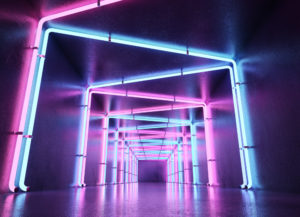Top 2019 Venue Trends for Meetings and Events

For an industry continually seeking to innovate, it’s no surprise that technologically advanced venues are in the forefront of meetings and events. In fact, Event Academy’s latest report on industry trends has found that venues offering advanced technology solutions are one of the biggest trends we’re seeing with organisers today.
We spoke to Event Academy’s principal, Claire Derreck, to discuss these findings and look at some of the other important venue trends they’re seeing this year. Have a look:
1) Unusual Event Locations
One key trend identified by the report is for unusual event locations. While traditional venues still have their place, there is a growing appetite for more unusual spaces, either fully managed or able to be configured to the client brief. This feeds into the idea that we are shifting from consumption of things to the gathering of experiences. And this can work amazingly well for events.
Locations such as Dinner in the Sky, the Stranded on the North Pole Experience, Battersea Power Station events or the Press Halls at Printworks London are perfect examples of event spaces which are non-traditional.
All are very different propositions but offer unique, memorable and flexible spaces suitable for almost any kind of event. Dinner in the Sky has been across the globe. It places guests around a dinner table and suspends them in the air while they eat. Not only do those guests experience a gastronomic event, they also get a they would never normally see.
The Press Halls at Printworks London is a converted former printworks which still has the original machinery. It is a very unusual space that lends itself well to weddings, exhibitions, concerts and more.
2) Technologically Advanced Venues
Technology is part of everyday life so it was perhaps inevitable that it would appear within the events industry at some point. That time is now as our trend report also noted a move towards more technologically advanced event venues.
Many venues have embraced technology as they realise it can transform an experience by adding more layers while taking nothing away. Significant moves by museums and art galleries are just two examples where a traditional venue has embraced technology. Innovations such as augmented reality and virtual reality add an extra layer of engagement. They also have the side benefit of attracting an entirely different demographic.
Pufferfish is a prime example of this. They installed the Puffershpere within the Lapworth Museum of Geology at the University of Birmingham. It brought virtual reality to visitors and has been so successful, it was shortlisted for the Art Fund Museum of the Year in 2017.
The Tate Modern is also another great example of a traditional venue adding layers of engagement with technology. The Modigliani VR exhibit allowed visitors to walk around the artist’s Paris studio in a fully immersive experience that brings his work into much richer focus.
Related reading: Top Venue Wi-fi Considerations for Event Planners
3) Flexible Event Spaces
Making event spaces work harder is not a new trend but some of the innovative ways the industry is getting more out of their spaces is. For example, the humble marquee. A mainstay of the events industry that is now being utilised in many more innovative ways such as for barn dances, small-scale gigs to large scale conferences.
A prime example of this is The Pavilion at the Tower of London. It combines a marquee with private access to an area of The Tower the public is not usually allowed to visit. The interior has been fitted out to reflect the Tower’s rich history and combined this with al fresco dining or drinks for all kinds of events.
Another example of how a flexible space can go further is The Garden Room in Syon Park. Set in the beautiful grounds of Syon Park in Brentford, this marquee has been set in private gardens away from the public with the magnificent backdrop of the house. The marquee can be configured for small office events through to destination weddings with a simple refit of the interior.
Flexible event spaces aren’t just about marquees. It’s about approaching any space with a new perspective and new ideas to make it work harder.
Conclusion
There is no doubt that the events industry is facing the same challenges as other industries with uncertainty, lower budgets, increased demands and rising prices. However, these are all challenges the industry is rising to. Venues are looking at their offerings in new and innovative ways and events planners and organisations are using their imagination to come up with new and exciting ideas for venues.
As an organiser, make sure you discuss your event in depth with the venue provider. The more the venue understands what you want and need, the more they can help. The beauty of venues that have dedicated events teams, is that they understand their space really well and can make great recommendations that you may not have considered. And remember, working in harmony with a venue team can be fundamental to the success of your event.
Did you enjoy reading this article? Why not sign up to our weekly newsletter for tips, updates and research reports on all the latest technology and marketing trends shaping the events industry today.
